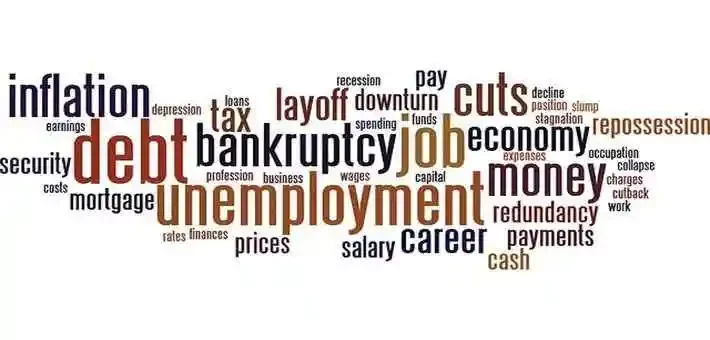More MCQs
HOME
Categories
Courses
Business Management MCQs
Fundamentals of Economics MCQs
Demand and Supply Elasticities MCQs
Utility Analysis Economics MCQs
Costs Revenues and Firms economics MCQs
Multiplier and Accelerator Economics
Economic Growth and Taxation MCQs
Economics Monetary Policy MCQs
Money and Credit economics MCQs
Consumption Savings and Investment MCQs
Total spending made by the household sector at a given level of income is called consumption. Whereas, the functional relationship between savings and the level of income is the savings function. Here on MCQs.club we have prepared Multiple Choice Questions (MCQs) on Consumption Savings and Investment that cover consumption savings and investment in macroeconomics MCQs, the relationship between them, the factors that determine consumption savings and investment. Moreover, there are MCQs on Marginal efficiency of capital (MEC) and types of Investments. Our MCQs are helpful for Competitive exams, Business management exams and Professional accountancy exams.
- Which of the following is true for “Consumption”?
- Total spending made by the household sector at a given level of income is called consumption.
- The functional relationship between consumption and level of income is the consumption function.
- Both A&B
- None
- Which of the following is true for “Savings”?
- The income remaining from the household sector after all consumption has taken place.
- The functional relationship between savings and the level of income is the savings function.
- Both A&B
- None
- Identify what is correct for Keynes’ Psychological Law –
- People increase their consumption as their income increases, but not by as much as their income increases.
- Aggregate consumption can increase due to increased aggregate income, but the increase in aggregate consumption will be less than the increase in income.
- What isn’t spent on consumption is saved.
- All of the above
- Determinants of the consumption function include:
- Real income
- Distribution of wealth
- Expectations of price changes
- Changes in Fiscal Policy
- Changes in Interest Rates
- All of the above
- (I) and (IV) only
- (II) (III) and (V) only
- None
- The proposed mathematical formula for Keynesian theory of consumption is:
- Y =a + bX
- C =a + bY
- C =a – bX
- None
- The extra consumption resulting from an increase in income is called___________.
- Induced consumption
- Real disposable income
- Autonomous spending
- None
- The consumption at a given level of income is made up of ____________ the amount of which depends on the marginal propensity to consume.
- Consumer spending plus the Induced spending
- Autonomous spending plus the Induced spending
- Real disposable income plus Autonomous spending
- None
- The Keynesian consumption function (C =a+ bY) is an equation of a straight. Identify which of the following is true.
- It follows that an increase in income leads to an increase in total consumer demand.
- This suggests that as income rises, consumer spending will rise.
- Both A&B
- None
- How a Shifts in the consumption curve is possible?
- Changes in some variables (e.g. interest rate)
- Changes in real disposable income
- Both A&B
- None
- Investment – An asset, item, or project that is purchased with the hope of generating future income.
- False
- True
- Types of investment that exist within the macroeconomy include:
- Autonomous investment
- Induced investment
- Both A&B
- None
- Which of the following is true for Autonomous investment –
- Investment that is motivated by the wellbeing to society that it delivers.
- This type of investment is independent of the level of income and aggregate demand.
- This type of investment is ordinarily undertaken by public bodies, or private organisations not pursuing profit
- All of the above
- Which of the following is true for Induced investment –
- Investment that is motivated by the margin of profit that it delivers.
- Investment that is dependent on the level of income.
- This type of investment is associated with private enterprise in pursuit of maximising profit.
- All of the above
- Keynes stated factors that determined the level of investment in an economy are:
- Marginal Efficiency of Capital
- Market rate of interest
- Both A&B
- None
- Marginal efficiency of capital (MEC) –
- The rate of discount which makes the present value of the prospective yield from the capital asset equal to its supply price.
- The rate at which a firm or household must pay for funds in the present, which will be paid back in the future. This rate is expressed as a percentage of the principal.
- Both A&B
- None
- Market rate of interest –
- The rate of discount which makes the present value of the prospective yield from the capital asset equal to its supply price.
- The rate at which a firm or household must pay for funds in the present, which will be paid back in the future. This rate is expressed as a percentage of the principal.
- Both A&B
- None
- The Marginal Efficiency of Capital (MEC) can shift outwards if the expected rate of return increases. Identify from the following, reasons that could cause this in Short Run:
- Demand for the good
- Change in income
- Current rate of investment
- Change in sentiment
- All of the above
- The Marginal Efficiency of Capital (MEC) can shift outwards if the expected rate of return increases. Identify from the following, reasons that could cause this in long Run:
- Population growth
- Technological development
- Quantity of capital goods already in existence
- Tax rates
- All of the above
- Which of the following ways the government can use to influence the level of private investment?
- Control interest rates
- Provide direct encouragement to investing firms
- Seek to stimulate business confidence
- Encourage technological developments
- Influencing the volume of consumption
- Government spending
- All of the above
- (I) (IV) and (VI) only
- (II) (III) and (V) only
- None
- The Consumption would fall for a number of reasons. From the following identify such reasons:
- High interest rates encourage people to save. This would put a downward pressure on consumption.
- High interest rates would result in lower disposable income for those people with loans and mortgages.
- High interest rates make it more expensive to borrow. This would reduce consumption.
- All of the above
- The Consumption would rise for a number of reasons. From the following identify such reasons:
- Low interest rates discourage saving.
- Low interest rates result in higher disposable income for those people with loans and mortgages.
- High interest rates make it less expensive to borrow. This would increase consumption.
- All of the above
—More to come soon—





4 Responses
Subject wise very very useful
Hey Thanks for the valuable feedback!! More to come soon. Stay tuned.
Really very useful. Thanks for providing it in such a good way
.
Thanks! Stay tune for more.